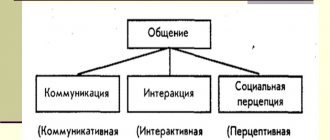Communication culture is a complex collective concept that determines the quality and level of perfection of communication. The culture of communication is considered an inseparable component of the culture of the individual. It characterizes value guidelines and normative postulates, moral models of communication, the essence of the moral and psychological qualities of the subjects of communicative interaction, methods, tools, rules, techniques and forms of communication.
The culture of communication contains a set of practical techniques, mechanisms and rules. Cultivated communication allows an individual not to transfer conflict situations in the professional sphere to the emotional and personal area of interpersonal interactions, to understand the meaning and motivation of the opponent’s actions, to reduce or completely eliminate excessive emotional outburst in relationships.
What is meant by “communication”?
Communication is a very complex intellectual process. It includes creating new contacts and developing them. A person feels the need to carry out joint activities with other people.
Joint practical activities, in turn, imply a full exchange of information and the development of a common interaction strategy. It is also important to be able to understand other people.
Communication is how we influence other people. Communication allows you to effectively organize joint theoretical and practical activities.
Through communication, a person is able to develop and maintain interpersonal relationships. This, in turn, allows you to assimilate other people’s experience, accumulate knowledge and skills. Communication plays a big role in satisfying spiritual needs. With the help of communication, people adopt other people's beliefs and views, assimilate new moral aspects and experience new feelings.
We believe that when it comes to communication between people, the central concept in this type of activity should be the concept of “culture of communication”.
In order to better understand the meaning of this term, you need to break it down into its components and initially discuss each individual word.
Conducting a conversation
A pleasant conversation is not determined only by the vocabulary or erudition of the participants. To make a conversation useful, politeness, listening skills, and a tactful attitude are important.
- The address “You” or “You” according to etiquette depends on the closeness of the acquaintance. When communication becomes closer, the person himself suggests calling it less formally.
- It is unacceptable to refer to a person present with a 3rd person singular pronoun. This looks like an attempt to take him out of the conversation.
- It can be difficult to remember the names of everyone present. If you make a mistake, simply apologize.
- An important factor is the distance between the interlocutors. An official meeting or introduction requires a distance of at least 2 arms' length.
- Politeness requires not interrupting interlocutors and not inserting comments, especially skeptical ones. Not everyone can express a thought right away; you should be patient and listen calmly.
- Parasitic words interfere with the normal perception of what is said and leave a bad impression of a person’s culture and education.
- The topic of conversation is an important part of a good conversation. Gossip and empty discussions, complaints about health or financial difficulties are inappropriate and leave negative feelings.
- Don't forget about humor. This will enliven the conversation. You just have to try to choose the right topics for jokes. Humor about religion and politics is unacceptable; you should not humiliate people of a particular social group with funny statements.
- Active gesticulation tires those around you. You should put less emotion into your movements when speaking.
- When communicating with strangers, etiquette rules do not allow the address “woman” or “man”. This sounds familiar; it is better to use impersonal sentence forms.
- Intonation means a lot for the perception of what is said. Raising your tone, being loudly indignant, or demonstrating disdain is, at the very least, impolite.
- Conducting a formal conversation requires avoiding swearing. Those who consider slang expressions and swearing to be appropriate do not always find understanding among serious educated people.
How to politely refuse your interlocutor
Knowing how to politely refuse is very important for maintaining personal space. It’s easier to say a short “no” than to waste energy on uninteresting and useless things. Communication etiquette does not require helping someone if there is no desire. It is impossible to meet all expectations.
How to say no correctly:
- Don't put off refusing. It is better to immediately show a negative attitude towards the request.
- Correctly explain the reason for the refusal. Then the person will not consider himself humiliated.
- To emphasize the seriousness of the refusal, you can cross your arms over your chest. This closed posture can prevent further manipulation.
- You cannot ridicule, arrogantly show your disdain or reproach the petitioner.
How to respond to insensitive questions
Communication is not always pleasant. Sometimes from people who are far from observing the canons of etiquette, you can hear rudeness, tactless hints, and statements aimed at humiliating.
- You should not humiliate yourself in response by answering in a rude tone. It is better to try to remain calm without showing that the remark hurts you.
- A good way to avoid leaving a meeting is to abruptly change the topic. This maneuver will help if a person behaved tactlessly without malicious intent.
- You can redirect the question to your interlocutor with a straight face.
- Coldly ignoring the last statement helps.
Modern communication etiquette is needed to regulate contacts between people. Established rules of good manners help avoid conflicts. Politeness requires tact, listening, dignity, and patience.
“Culture” from the point of view of researchers
The term “culture” today is characterized by different authors in completely different ways. In everyday life, culture is often understood as a behavioral pattern that one should follow. Some define culture as intelligence. It is believed that culture is a quality of a person’s personality.
From a theoretical point of view, culture is a feature of society that reflects the current level of development and determines people’s attitude towards other people and towards nature. Some perceive culture as the creative abilities of an individual. Others refer to culture as a characteristic of society as a whole.
There is also a point of view that culture is the material and spiritual values of a person. Culture demonstrates the degree of development of society as a whole and of a given individual. Culture determines how creative activity is carried out, how new knowledge is acquired, stored and transmitted to other people.
According to psychologists, culture is a fairly stable personality property, which includes a worldview and axiology and demonstrates a person’s attitude towards other people and the world around him.
Although culture is often perceived as a property of an individual, the cultural values prevailing in society characterize its state as a whole. Part of culture is morality, which is nothing more than a norm adopted by society for building relationships between its individual members. Morality must be objective and have social significance.
Etiquette for business conversations on the phone
Telephone conversations also have their own rules:
- they begin with a greeting and introduction with the name of the speaker's organization and position;
- the conversation should be concise and to the point;
- it is necessary to maintain the sequence of the conversation;
- negotiations are conducted politely, slowly, in a calm voice;
- diction must be clear;
- After the conversation, you need to say goodbye words.
Important! Before starting business negotiations, it is better to write the essence of the issue on paper so that during the conversation you do not jump from one point to another.
Morality of communication
There is also the term “communication morality.” It has a synonym – “communication ethics”. These are all humanistic norms and values taken together that affect relationships between people.
Ethical standards are based on the fact that it is necessary to respect your own dignity and the dignity of those around you, all people are equal, relationships between them must be built on the principles of humanity and justice. The main motives that determine a person’s behavior are his habits, values, needs and beliefs.
What is etiquette?
We understand the term “etiquette” as a set of rules concerning the behavior by which a person shows his attitude towards others. This affects areas such as the way a person speaks, greetings, clothing and mannerisms. If someone follows the rules of etiquette pedantically, this does not make the person highly cultured, because etiquette is not just rules that should be manifested externally.
True culture comes from the heart of a person and is based on how he truly relates to the people around him.
The same applies to children. Their culture of communication should also be based on respect for adults and peers, and a friendly attitude towards them. Also, the child must have a developed vocabulary that would allow him to produce the necessary forms of address. This also includes skills for polite behavior in everyday life and in public places.
How to refuse correctly
Sometimes it happens that an awkward situation arises where you need to refuse a particular offer. This can be done using different tactics. The form of refusal is chosen based on the possibility of providing or not providing assistance, the proximity of communication with the person, the personal attitude towards the interlocutor, and the type of request.
Speech subtleties of refusal:
- A decisive "no"
If the situation requires an immediate response, you should not delay in refusing. A trembling voice and shifting eyes will let your interlocutor know that you are not confident in yourself. As a consequence, this opens the horizon for repeated manipulation.
- Arguments
When justifying your refusal, repeated requests or reproaches are not acceptable according to the ethics of communication. If this occurs, then this is evidence of the level of communication culture of the other person, and you have the right to leave. But refusing without explaining the reason is unacceptable.
- Defensive posture
There is no need to back up your verbal refusal with a psychological block in the form of crossed arms or legs. Such behavior can offend your interlocutor.
- Reproaches towards the petitioner
Under no circumstances should you shame or accuse another person of impudence for trying to ask for something. His right to ask, yours to refuse. Most often, in such a situation, notations are not needed. But you can at least provide moral support.
Communication culture and its norms
According to the works of M.A. Chernyshev’s culture of communication is the norms of interaction between people existing in society. These norms are the reference standards for communication within a certain social group. Each nation has its own culture of communication, which is reflected in its national identity.
The culture of communication can be compared to the unique stamp of each nation. After all, every nation has its own unique history of development, national traditions and way of life formed over centuries.
If we consider the culture of communication in a narrow sense, then this is the extent to which a person has mastered the communication skills accepted in the society in which he is located.
The culture of speech is an integral part of the culture of communication. According to the works of A.M. Gorky, purity of speech is the main way to preserve human culture as a whole. In order to achieve this, it is necessary to cultivate a speech culture in people. A preschooler must have a sufficient vocabulary, be able to succinctly express his thoughts and feelings, and speak calmly in any circumstances.
Features of speech etiquette in different countries
Knowledge of the speech culture of different nations allows you to quickly establish contact with foreigners, especially in their countries, and allows you to avoid ambiguity and insult to your interlocutor in simple words, because the same element is perceived differently in different parts of the world. Correctly expressing thoughts, not offending your interlocutor, guaranteed to receive an answer, not breaking or offending local traditions - these are the possibilities of speech etiquette.
Even when speaking through an interpreter, you should respect the speech culture of the place where your interlocutor or partner is from. And if you communicate directly, then you cannot do without strict adherence to the rules. Therefore, learning a foreign language begins with memorizing the most important phrases, addresses, and corresponding speech forms (greetings, farewells, gratitude, forgiveness).
Each country and nationality has its own rules of speech behavior. Thus, the Japanese are characterized by recognition of endless respect for the interlocutor and his family. They try to avoid direct denial and refusal. A Japanese partner will find hundreds of ways to say “no” without saying it directly. This will not be a way to avoid responsibility or deceive a partner, this is a feature of the mentality and the desire not to offend a person with a refusal.
The French tend to use florid figures of speech, making communication colorful and rich in turns. At the same time, they need clarity, intelligibility and clarity in the conversation. They cannot say “she smiled”; they will definitely clarify what kind of smile it is, kind, playful, with a hint of sadness or mockery. Although French has long been the language of diplomats, speaking it while masking the true meaning is not easy.
It is typical for the British to strictly adhere to etiquette in all areas of their lives. They show a certain snobbery towards him. Without adhering to most of the rules of behavior and conversation, a person will be perceived as rude and an ill-mannered gentleman. Without a culture of speech, it will not be possible to get what you want from a business partner or government official. But it is necessary to choose the right level of politeness (official, neutral and familiar communication style).
Culture of communication in preschool age
Preschool age is the time when children learn the basic grammatical features of their native language. Children learn to produce simple speech utterances. At this age, it is already necessary to teach children to address adults by name and patronymic, using the pronoun “You”.
Already at this age, you need to work on the purity of pronunciation, teach children to speak at a calm pace, without stretching out the words, but also without speaking in a tongue twister.
When a teacher organizes various joint activities as part of educational activities, children try to adjust their speech, taking into account the content of the material, the rules of the lesson, and watch their words. However, it is important to accustom the child to the culture of speech in normal everyday communication.
A child must have the habit of adhering to ethical standards in any type of activity, including during independent activities. Speech culture has a beneficial effect on the activity of communication between peers during the game and helps to avoid numerous conflicts.
Characteristics of ways to master and establish effective professional communication
Today it is impossible to solve the problems of scientific understanding and design of the activity process without including content that provides for training a future specialist to communicate, taking into account the specifics of professional activity. In the conditions of democratization of social reality and the emergence of a market economy, the country needs workers with communication skills. In communication, a person self-determines and self-presents. Disadvantages of communicative development hinder the professional and personal growth of a specialist.
Success of professional communication
determine the following
abilities and qualities
: communication flair; sociability and willingness to communicate; clear and strategic thinking; ability for analytical work; the ability to professionally evaluate the results of communicative activity; establish a connection between professional goals and communication programs; possess professional knowledge on problems related to that sector of the economy, which are reported in interviews, conversations, etc.
Professional communication is a special system that ensures constant monitoring of the progress and results of a specialist’s activities, formulating the goals of upcoming communication, selecting sources of information (including interviewees), collecting information about the interlocutor, analyzing the collected information, and providing it to readers, listeners, and television viewers. Communication as a special type of creativity of a journalist is carried out through axiological intersubjective interaction, which determines the mutual understanding of people and their spiritual community in professional activities.
Professional communication is the verbal interaction of a specialist with other specialists and clients of the organization in the course of professional activities.
The culture of professional activity largely determines its effectiveness, as well as the reputation of the organization as a whole and the individual specialist.
The culture of communication is an important part of professional culture, and for such professions as, for example, a teacher, journalist, manager, lawyer, it is a leading part, since for these professions speech is the main tool of work.
Professional culture includes possession of special skills and abilities of professional activity, behavioral culture, emotional culture, general speech culture and professional communication culture.
Special skills are acquired through professional training. The culture of behavior is formed by the individual in accordance with the ethical standards of society. Emotional culture includes the ability to regulate one’s mental state, understand the emotional state of one’s interlocutor, manage one’s emotions, relieve anxiety, overcome indecision, and establish emotional contact.
The general culture of speech provides for norms of speech behavior and requirements for speech in any communication situations; the culture of professional communication is characterized by a number of additional requirements in relation to the general speech culture.
In the professional culture of communication, the role of socio-psychological characteristics of speech becomes especially important, such as the correspondence of speech to the emotional state of the interlocutor, the business orientation of speech, and the correspondence of speech to social roles.
Speech is a means of acquiring, exercising, developing and transferring professional skills.
The culture of professional speech includes:
- knowledge of the terminology of this specialty;
- ability to build a speech on a professional topic;
- ability to organize and manage professional dialogue;
- ability to communicate with non-specialists on issues of professional activity.
Knowledge of terminology, the ability to establish connections between previously known and new terms, the ability to use scientific concepts and terms in the practical analysis of production situations, knowledge of the features of the style of professional speech constitute linguistic competence in professional communication.
An evaluative attitude towards a statement, awareness of the target setting of communication, taking into account the communication situation, its place, relationship with the interlocutor, predicting the impact of the statement on the interlocutor, the ability to create an atmosphere favorable for communication, the ability to maintain contacts with people of different psychological types and levels of education are included in the communicative competence of a specialist . Communicative competence includes both the ability to communicate and exchange information, as well as the ability to establish appropriate relationships with participants in the production process and organize joint creative activities.
The ability to control emotions, direct dialogue in accordance with the needs of professional activity, compliance with ethical standards and etiquette requirements constitute behavioral competence. Communicative behavior implies such an organization of speech and corresponding speech behavior that influence the creation and maintenance of an emotional and psychological atmosphere of communication with colleagues and clients, the nature of the relationships between participants in the production process, and the style of their work.
So, for success in professional activity, a modern specialist needs to be fluent in speech culture skills, have linguistic, communicative and behavioral competence in professional communication.
This requires the following qualities:
- knowledge of the norms of the literary language and stable skills in their application in speech;
- ability to monitor the accuracy, logic and expressiveness of speech;
— knowledge of professional terminology, knowledge of the correspondence between terms and concepts;
- mastery of professional speech style;
— the ability to determine the goal and understand the communication situation;
— the ability to take into account the social and individual personality traits of the interlocutor;
— skills in predicting the development of dialogue and the interlocutor’s reactions;
- ability to create and maintain a favorable communication atmosphere;
— a high degree of control over the emotional state and expression of emotions;
— the ability to direct dialogue in accordance with the goals of professional activity;
- knowledge of etiquette and strict adherence to its rules.
II. Questions for self-control
1. Define the concepts of “ethics”, “communication”, “business communication”, “ethics of business communication”.
2. What are the features of the ethics of business communication in traditional society?
3. What do you think is the role of ethics in business communication?
4. Explain the meaning of the concepts of “culture of behavior” and “business etiquette” for a social work specialist.
5. Why do you think it is necessary to follow certain rules regarding clothing and
appearance to a business person?
6. Describe the ethical principles of specialist communication.
7. What is the essence of a specialist’s personal qualities and skills?
8. What abilities and qualities determine the success of professional communication?
9. Complete assignments for practical classes and determine your style of business communication and analyze your communication style.
10. Complete the assignment for independent work and make approximate recommendations for business etiquette.
Topic 3.2. Mood as a basic category of communication psychology
I. Summary
1. The concept of mood
The concept of “mood” is widely used, more often in everyday speech than in the language of psychologists. Very often and in different contexts we come across the expressions “spiritual, inner mood”, “disposition to business, success, victory...”. It is difficult to list all the definitions that are attached to the word “mood”. In psychiatry this term is used more often than in psychology.
Mood
- a general emotional state that, over a certain period of time, colors a person’s experiences and activities; the reason for such a state is not always recognized by a person, and in these cases the mood is experienced as “unaccountable.”
The mood tends to radiate: to a person experiencing a joyful mood in connection with some kind of success in life, everything seems sweet and pleasant. Scientific psychologist N.D. Levitov clarified that moods, like all mental states, are determined by both personality and situation. In some cases they are more objective, and in others they are non-objective; in some cases they are more personal, in others less personal.
In determining the role of mood, it is advisable to proceed from the general principles of the organization of the psyche. The psyche is holistic, it has links (parts) that realize the integrity of its organization (structure) - temporal, spatial, functional, etc. Personal structures and mental states refer to mental phenomena of various time scales. There are links that connect them, preserving the integrity of the psyche. The role of such a link, realizing the constant influence of the individual on mental states, is played by mood. Let us try to give such a definition to the concept of “mood”, which will reflect the role of the individual as the main integrator of the human psyche.
Mood is a relatively stable component of mental states, the main link in the relationship of personality structures with various components of mental states - feelings and emotions, experiences of events occurring in the spiritual, social and physical life of the individual, the mental and physical tone of the individual.
In the scientific literature, the definition of “increased, elevated mood” is often found. The concepts of “elevated” and “harmonious” mood do not coincide. Harmonious is considered to be an understanding of mood that contributes to the emergence of a state that is favorable for a person to achieve his distant and close life goals. In a euphoric state, the mood is extremely high, but not always harmonious. A truly harmonious mood is not only pleasant sensations, positive emotions, it gives rise to states of inspiration, states of higher experiences. Harmonization of mood largely depends on the success of self-realization and self-development of the individual.
2. Mood structure. Classification of mood.
Mood structure. Being a connecting link of complex mental phenomena (personality structures and various components of mental states), which have different rates of change and development, the mood itself also has a complex structure.
Mood represents the characteristics of a person’s physical, mental and spiritual existence. First of all, mood is a phenomenon related to the psyche (mental being of the individual). This is manifested in the fact that all the main spheres of personality exert their influence on him. The emotional, cognitive and motivational spheres have a particularly strong influence.
1) Emotional component
Most of all, this component of mood is characterized by the dominant emotion,
in accordance with the ideas of V.N. Myasishcheva - sensual tone. Positive emotional background - cheerful, cheerful, elevated mood; negative - sad, depressed, low mood. In the formation of an actual and relatively stable state, various feelings and experiences (including those of the opposite sign) are combined with different influences on the sensory tone as a whole. The fusion of positive and negative emotions forms a certain emotional dominant - the emotional component of mood. It is determined by many parameters of acceptance of oneself and others, satisfaction or dissatisfaction with the entire course of life. The emotional component also includes experiences of bodily well-being—physical comfort or discomfort. The latter are more closely related to the current mood than to the dominant one.
Mood often arises outside the control of consciousness, but this does not mean that a person’s mood does not depend on his conscious activity, on what and how he is aware; this means that the addiction itself often does not fall into the field of his consciousness. “Mood is, in this sense, an unconscious, emotional “assessment” by a person of how circumstances are currently shaping up for her.”
2) Relationship component
This component summarizes the structure of personal relationships: features of self-esteem and self-acceptance, satisfaction with relationships with the natural world, objects, and people. A special role in it is played by the correspondence or, on the contrary, discrepancy between the perceived and desired “I” of the individual, the degree of harmony of the entire set of relationships of the individual, the activity of the individual’s relationships, the basic positions of the individual and his attitudes.
Mood is closely connected with how vital relationships develop for an individual with others, with the course of his own activities. Essential for mood is not only the objective course of events itself, regardless of the individual’s attitude towards it, but also how a person evaluates what is happening and relates to it.
3) Cognitive (cognitive) component
A person is aware of his relationship with the world of living and inanimate nature, with the world of people - with society as a whole, with its individual groups, with significant other people. The processes of consciousness and self-awareness, self-awareness and self-knowledge in a awake, mentally healthy person are not interrupted. Ideas about the world and yourself are reflected in your mood.
The cognitive component of mood is formed by interpretations of the current life situation and the completeness of its understanding. Understanding the situation as a whole and its assessment depend on the perception of the situation as definite or uncertain, on the forecast of the prospects for the development of the situation. All these are significant factors that determine the formation of mood.
4) Motivational component
The nature of motives and the intensity of motivation are an essential determinant of any mental state. The severity of needs and the strength of motivation largely determine the intensity of emotional processes, the severity of the reaction to the situation, to the development of events. Everything is reflected in the mood.
The motivational sphere, as one of the most important structures of personality, is constantly represented in an integrative form by a certain component in moods, and through it in mental states.
5) Component of physical well-being
A person’s bodily existence is also reflected in his mood. The sensual basis of mood is formed, according to S.L. Rubinstein, organic well-being, vital activity tone of the body and those diffuse, weakly localized organic sensations
Physical health and mood are interconnected and determine each other. An elevated, cheerful, cheerful mood leads to increased vitality and psychological stability, protects against diseases and creates the basis for recovery in patients. On the other hand, experiencing your health, your mental and physical strength, and physical well-being are a very important factor that predisposes you to a stable, joyful, productive mood.
Mood classification
There is an unaccountable mood, that is, one whose origin is incomprehensible or unclear to a person. In fact, these states, like everything in mental life, have their own reasons, which act in such a way that a person does not notice them or does not want to notice them.
The main reasons for unaccountable moods are as follows:
1. The mood is caused by several reasons, each of which is completely insufficient to influence the psyche, but, when summed up, they act. For example, a person, going to work, remembers that he forgot to take an interesting book with him to read on the trolleybus, then he stood in line at the kiosk for a magazine, but he did not have enough copies. As a result, the mood deteriorated, but the man himself denied that he could have been influenced by such reasons as a forgotten book and a missing magazine. However, it turned out cumulative
(gradually accumulating or accumulating, adding up over time) accumulation of reasons that ultimately affected the mood. Likewise, a series of minor good fortunes can ultimately create a joyful mood.
2. The reason for the mood is such that a person is ashamed even to himself to admit its effect on the mood. The student was in a bad mood at home all evening, which was caused by the fact that his friend did not give him a racket to play tennis. When this was pointed out to the student as the reason for the deterioration in his mood, he exclaimed indignantly: “I will spoil my mood because of such a trifle.”
3. The reason is something that is really difficult for the person himself to know. Thus, the onset of a flu-like state can affect mood, and the person himself may not yet notice this condition.
Uncertainty and inconsistency of mood often depend on the difficulty of establishing the cause.
Moods can have different durations. It can be fleeting, or it can last for several days.
There are long-term moods, for example, when a person “mopes” during the entire vacation because he chose the wrong place to spend it.
If the mood continues for quite a long time, then at least in its shades it is subject to change.
In the dynamics of mood, several cases can be distinguished:
1. The mood becomes calmer. The tourist may be in an enthusiastic mood, and then gets used to the impressions, and the good mood takes on a calmer form of a joyful experience of satisfaction.
2. The mood intensifies, as if progressing. Boredom is initially experienced as something still tolerable, but gradually becomes more and more painful.
3. The mood changes its objects and through this acquires greater duration. A person in a cheerful mood looks for different companions to have partners in his fun.
Moods can be divided according to their significance for a person:
• for sthenic and asthenic;
• positive and negative;
• joyful and sad.
But such a distinction is very general and to some extent primitive. There are complex contradictory moods, such as, for example, what Zhukovsky called “sweet melancholy.” It is difficult to say what predominates in this mood: joy or sadness.
Moods, like all mental states, can be indicative of personality and can be situational.
Often the mood characterizes a person. Optimistic people tend to be in a good mood, pessimists tend to be in a bad, sad mood. There are, for example, “laughing”, cheerful people who have fun even when others are not experiencing any fun in a given situation. There are poetic “natures” whose mood is full of lyricism and romance; There are also prosaic people to whom such sentiments are alien.
But there are situational moods that are not personal in nature. The fleeting human feeling that arose in Plyushkin at the mention of a school friend was a situational mood, alien to the mental appearance of this pitiful and seemingly stiff miser. Failures worsen the mood of all people, including those who are usually cheerful and cheerful. Finally, we can distinguish between moods by their effectiveness, by the strength of their influence on human activity and behavior.
Some moods are platonic, limited to the sphere of experiences. For example, a person may have a good, cheerful mood, but it may not encourage him to work energetically or be persistent. The influence of mood on behavior depends on how much a person can control himself and cope with his mood. People who are self-possessed and have good control over their behavior can, for example, work successfully even when they are in a bad mood caused by some kind of trouble. Some people are victims of their mood; for example, when they are in a sad mood, they become completely inactive.
People differ in the outward expression of their mood. For some people, their mood can always be read on their face, while other people disguise their mood so well that it is difficult to guess about it from a person’s appearance. A man jokes, laughs, but in his soul, as they say, “cats are scratching.”
3 Personality and stress. The concepts of “distress”, “eustress”. The problem of regulation of mental states
The word "stress", like "success", "failure" and "happiness", has different meanings for different people. Therefore, it is very difficult to define it, although it has become part of our everyday speech. Isn't "stress" just a synonym for "distress"? Is it effort, fatigue, pain, fear, the need to concentrate, the humiliation of public reproach, loss of blood, or even an unexpected huge success that leads to the disruption of the entire way of life? The answer to this question is both yes and no. This is why it is so difficult to define stress. Any of these conditions can cause stress, but none of them can be isolated and said “this is stress,” because this term equally applies to all others.
There is stress
a nonspecific response of the body to any demand presented to it.
To understand this definition, we must first explain what we mean by the word “non-specific”. Each demand presented to the body is in some sense unique or specific. In the cold we shiver to release more heat, in the sun we sweat, and the evaporation of sweat cools us, etc.
However, regardless of what kind of changes they cause in the body, all these agents have something in common. They are making demands for restructuring. This requirement is not specific, it consists of adapting to the difficulty that has arisen, whatever it may be.
These functions are independent of specific effects. Non-specific demands imposed by the impact itself are the essence of stress
.
From the point of view of the stress response, it does not matter whether the situation we are faced with is pleasant or unpleasant.
All that matters is the intensity of the need for restructuring or adaptation. The mother, who was informed about the death of her only son in battle, experiences terrible mental shock. If, many years later, it turns out that the message was false and her son suddenly enters the room unharmed, she will feel intense joy. The specific results of two events - grief and joy - are completely different, even opposite, but their stressor effect - a nonspecific requirement for adaptation to a new situation - may be the same. Stress
- this is not just nervous tension. Activities associated with stress can be pleasant or unpleasant. Distress is always unpleasant...
Structural component of stress. Let us consider in more detail the component composition of stress in its structural relationships. The general objective and subjective characteristics of all structural levels constitute, as it were, a stable core of this state, present in its various (due to reason, duration, individual uniqueness) varieties. Some of them reflect the deepest changes in the body. For stress, for example, a complex of nonspecific; physiological changes at various levels: biochemical (increased concentration of adrenaline, steroid hormones in the blood), morphological (increase in the adrenal cortex, involution of the thymus gland, the occurrence of gastrointestinal ulcers), etc., isolated and studied by G. Selye, received the name general adaptation syndrome. The remaining general characteristics (subjective and objective) of higher levels are closely related to physiological changes. The first are their earliest signals in the human mind (a feeling of tension in a state of stress), and the second are their immediate consequence (impaired motor coordination, autonomic reactions, attention disorder, behavioral changes in a state of stress).
The group of special objective characteristics of stress reflects changes observed against the background of general shifts in fairly large groups of people in such a state that arose in specific conditions. This is a violation of motor coordination, a disorder of sensory, memory, thinking, will, perception of time, speech. The group of special subjective characteristics of the socio-psychological level of stress represents a person’s attitude to an activity or situation. The individual uniqueness of the course of this condition depends on what it will be like in each specific case.
The third group - individual subjective and objective characteristics - represents the variety of individual manifestations of characteristics of all levels inherent in specific subjects under stress.
So, a set of various unfavorable reactions that predominantly occur in the human body due to the influence of negative factors are called stressful situations or stress. In simple words, stress is a psychological, physiological and moral disorder of a person that arises due to the influence of the following factors: everyday bustle; quarreling; problems at work; financial difficulties; instability; death of loved ones.
Types of stress Eustress; Distress.
These types of stress have opposite characteristics. Eustress is an effect on the human body predominantly from a positive side. In this case, the disorder is justified by positive emotions, which the person is ready for and is confident that he can cope with them. Eustress is also called the awakening reaction, since positive emotions are the main driving force of a person to positive actions. This type is a kind of portion of adrenaline received by a person due to any positive excitement or joy. Eustress is not a dangerous form of the disease and has predominantly positive properties.
Distress is the reverse reaction of eustress on the body. Distress occurs due to the impact of critical overstrain on the body. It is distress that is the main type of stress and, accordingly, psychological disorder in a person. Distress is also called harmful stress, since it only contributes to a negative effect on the body and the development of other types of diseases in humans. Distress
is divided into the following subspecies:
Physiological;
Psychological and emotional;
Chronic;
Short term;
Nervous.
Each of the presented species has a negative impact on humans, thereby causing various disorders and diseases. Stress can arise spontaneously in the event of unfavorable news, or accumulate over the years. The accumulated type is the most dangerous, as against its background the development of a chronic disease occurs, from which it is impossible to get rid of.
Psychological and emotional distress
. This illness is associated exclusively with experiences against the background of various emotions. The consequences of the psychological type of disease are unfavorable relationships with society. The emotional appearance occurs during the influence on the body of both positive emotions (eustress) and negative ones (distress). Emotional types include, for example, an increase in wages, a promotion, or the death of a loved one.
Physiological distress.
This type occurs due to the negative impact on the body of the following factors: heat, hunger, thirst, cold, love and others.
If one of the factors presented above exposes one’s body, a person is forced to cause harm to himself. Even after the cessation of exposure to these factors, a person continues to develop an unfavorable condition. As a result of exposure to negative factors, the following series of negative consequences arises: lack of sleep, stomach problems, overwork and others.
Chronic distress.
This type is the most dangerous, since a person is exposed to negative influences on a daily basis, even without the presence of appropriate reasons. The consequences for the chronic type are the most unfavorable, as they lead to the development of suicide, depression, nervous breakdown, etc. Often people diagnosed with chronic stress end up in a psychiatric hospital. The disease has no cure, which makes it even more dangerous.
Nervous distress.
This type occurs mainly under the influence of excessive stress. It can affect both a completely healthy person and people diagnosed with anxiety neurosis. The development of this species is influenced mainly by the individual conditions of the human nervous system.
The problem of regulation of mental states.
In the regulation of mental states, it is advisable to distinguish three main levels:
• organismic;
• individual;
• personal.
Personal regulation of mental states is carried out in different ways. Both personality properties and its content in a certain way influence the emergence and stability of mental states. Value orientations, self-awareness, self-esteem, dominant needs and motives, attitudes, updated goals, intentions - each of these factors influences the emergence and dynamics of the state. The relationships between personality and mental states are of the nature of mutual influence - states have a reverse impact on the personality, its development and dynamics, the formation of some properties and the weakening of others, the emergence and restructuring of motives and goals. About the reverse influence, K. Jung wrote: “If a condition somehow becomes chronic, then as a result a type arises, that is, a habitual attitude in which one mechanism constantly dominates, without being, of course, able to completely suppress the other, since it necessarily belongs to the mental activity of life.”
More constructive divisions of personality traits are needed. L.I. Antsyferova (1990) offers a new understanding of the dynamic approach to personality; she identifies two classes of concepts that express different forms of the dynamics of the individual’s internal life and behavior. The first includes the concepts of psychological new formations of personality - the formation of new subjective relationships, positions, personality traits, a new style of thinking, a new system of values, a new meaning of life, improvement. It includes irreversible personality changes. The concepts denoting them are united based on the category “development”. The second class includes reversible changes in the psychological organization of the individual, united on the basis of the category “functioning” - this is the actualization and de-actualization of already developed psychological mechanisms, operations, knowledge and skills; change of settings; increase or decrease in mental stress, intellectual effort, changes in mental states, etc.
The structure of the personality, the dynamics of the personality and the state of the personality form the main categorical triad of mental phenomena related to the personality. Personality structure is a set of stable connections between various formations (substructures) of the personality. Personality dynamics is the development of personality, the emergence of new properties and the weakening or disappearance of existing ones. These processes are caused by age-related changes in the individual, status changes, environmental and some other factors. Dynamics has both external and internal determination associated with the development of needs, motives, the formation of relationships, values, attitudes, etc. The dynamics of personality as a whole is the integration of the listed individual processes, bringing them into a single channel of personal development. Personality states can be viewed in two aspects.
It is not always easy to confidently attribute some mental quality to states or personality traits. According to A.V. Makhnach (1995), the criterion can be the degree of stability of the measured personality property. The central link in the relationship between personal properties and the characteristics of mental states is self-attitude, since it is this that determines the parameters of the dominant mood. An active attitude towards the life situation, the individual’s readiness to overcome obstacles, and satisfaction with self-realization are also of great importance.
II. Questions for self-control
1. Why is mood one of the basic categories of communication?
2. Distinguish between the concepts of mood and mood. What are the similarities and differences?
3. Describe the concepts of activation and disargonization of mood. What are the structural elements of these concepts?
4. Analyze your behavior and mood. Can you identify a number of structural elements of your own mood?
5. What is a stress factor for you? Analyze and justify your behavior.
Topic 3.3. Development of communication skills
I. Summary
1.Techniques and methods of communication. Rules of listening, conversation, persuasion
The main parameters of effective communication are a person’s ability and skills in using two communication techniques:
· techniques of understanding communication;
Directive communication techniques.
The parameters of the ineffectiveness of practical communication are a person’s inclinations and habits to use the so-called belittling-compliant and defensive-aggressive forms of behavior as inadequate substitutes for understanding and directive communication.
Technique of understanding communication.
This is a set of attitudes of the subject of communication, rules and specific methods of response aimed at understanding the partner and his problems, establishing psychological contact, studying his personal characteristics, finding out his point of view on the problem under discussion, etc.
Essential conditions for creating a climate of trust are the following attitudes of the subject of communication towards interaction with a partner:
1. to an understanding, non-evaluative response to the partner’s thoughts, feelings, ideas and statements;
2. positive acceptance of the interlocutor’s personality;
3. on the consistency (congruence) of one’s own behavior when interacting with him.
of understanding response in communication :
· listen more, speak less yourself, “follow” your partner’s statements and emotions;
· refrain from making your assessments, ask fewer questions, do not “push” your partner to discuss those issues that he “should” talk about from your point of view;
· strive first of all to respond to personally significant information that is most closely related to the needs and interests of your partner;
· strive to respond to the feelings and emotional states of the interlocutor.
We list these techniques without substantive disclosure:
· simple phrases confirming the existence of contact (expression of attention and interest);
· paraphrasing statements and openly expressed feelings of a partner (expressing attention and checking the correctness of understanding);
· clarifying the thoughts and feelings of the interlocutor that are not expressed
Communication structure
Communication culture is a structural system that consists of the following elements: communication, interactivity, perceptivity.
If a person has formed a culture of communication, then he has a whole system of moral beliefs that are part of his personality. In order to effectively implement a culture of communication, you need to master the technology of building relationships in a variety of circumstances. The qualities that a person exhibits, his behavior - all this is an indicator of how well his communication culture is formed.
Today, science divides the culture of communication into three main components: the normative component, the communicative component and the ethical component.
If we single out the most important one among these three, it would be the normative component. It is based on literary norms and the ability to use them in one’s own speech. However, it is not always necessary to speak correctly. After all, it is also important to consider who the speech is for and how knowledgeable this person is about the topic and interested in it.
general characteristics
The sphere of speech culture includes the transmission of information plus linguistic ways of expressing emotions adopted by a particular people. So, if in one culture it is customary to openly share emotions, talking about business, then in others it is natural to be restrained, leaving personal things at home.
Speech etiquette consists of many ready-made formulas that make it easier to study, making it simple and clear in what situation, what set of words is necessary.
Communication is divided into three blocks:
- Beginning (meeting/greeting/introduction).
- The basis of the conversation (the essence and reason for the appeal or communication).
- Final (final, final part).
Regardless of the topic, a proper conversation should be like this, otherwise it will be difficult for the interlocutor to tune in to the right mood, he may not understand what they want to convey or forget about the main idea of the conversation.
Formulas include: words of politeness, greetings, farewells, etc.
Levels of the speech etiquette system:
- vocabulary, phraseology (forms of address, special words, expressions);
- grammar (you are capitalized);
- stylistics (use of all reserves of the selected speech);
- intonation (calm only);
- spelling (full forms of words, no jargon, slang or abbreviations);
- psychology (hear the interlocutor, do not interrupt, do not interfere with other people’s communication).
The value of speech culture is so important that it is observed at all levels of communication, from the babble of a child and an adult, to business communication and even street chatter. Naturally, these will be different formulas.
Communication methods
Human language uses a huge arsenal of methods that allow you to find the most suitable words in order to explain the essence of the issue under discussion.
It is necessary to choose such language tools that allow you to effectively complete the tasks for which communication is organized at the moment. And how well a person copes with the choice of these means is the communicative component of the culture of communication.
If we talk about the aesthetic component, then this is how well a person observes the norms of social behavior, whether he shows respect and goodwill towards the people around him, and whether he knows how to behave tactfully and delicately.
So, in this work, the culture of communication is understood as all the combined knowledge and skills that allow people to carry out purposeful interaction, during which they adequately select and use suitable means of communication, are able to predict the impact of the speech produced on the interlocutor, and are able to understand information coming from others .
Today, science divides the culture of communication into three main components: the normative component, the communicative component and the ethical component.
Unusual functions
The main function of speech etiquette is communicative. Help establish a connection between interlocutors, express respect during a conversation, set the appropriate tone and emotional coloring using speech tools. But do not underestimate other, unusual functions.
Functions of speech etiquette:
- establishing contact - establishing a connection with the interlocutor, setting up the conversation in the right way, preparing for the transfer of information;
- appellative - addressing the interlocutor, the function of attracting and concentrating attention on oneself, a call for communication;
- conative - the use of suitable speech patterns, depending on the social role of the interlocutor;
- voluntarily - influencing the conversation participant using speech tools, for example, requests, advice, suggestions;
- emotive – selection of the necessary speech structure, depending on the emotions and feelings evoked by the person, topic of conversation or situation.
It is difficult to overestimate the role and possibilities of speech etiquette for a resident of a metropolis. People from anthill cities have to interact daily with hundreds of people of varying proximity, importance and social level. By using the correct phrases and correct formulas, a person receives a powerful tool for interaction and influence on interlocutors and increases the efficiency of activities.










